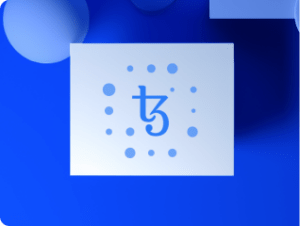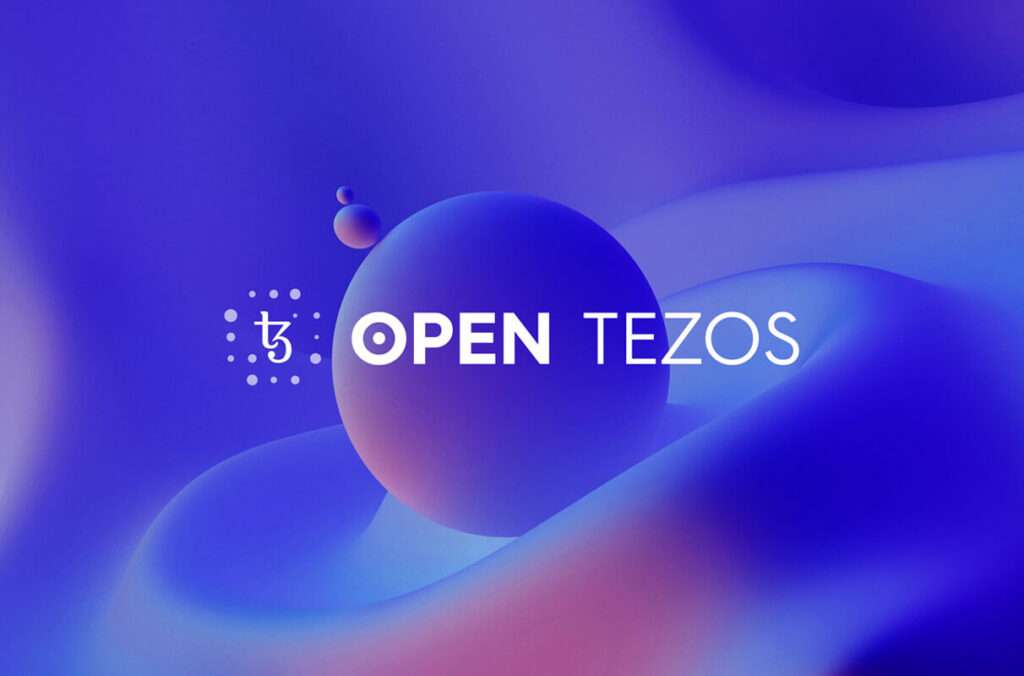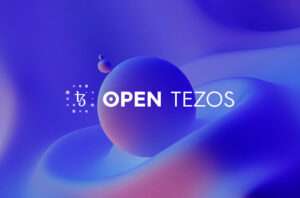Latest News
- Crypto market’s weekly winners and losers – XCN, FARTCOIN, XTZ, EOS
- Binance to Adjust Collateral Rates for Six Crypto Assets
- Binance Reveals Key Update On UNI, ALGO, CRV, & These 3 Crypto, Here’s All
- Blockchain Forum 2025: Global Crypto Leaders to Meet in Moscow
Current Price
The current price of XTZ is $0.49972
Introduction
Tezos (XTZ) presents a compelling case within the blockchain ecosystem, particularly due to its innovative on-chain governance and self-amendment features.
These attributes not only facilitate seamless upgrades but also mitigate the risks commonly associated with hard forks.
Additionally, Tezos’s adoption of a liquid proof-of-stake mechanism promotes energy efficiency while ensuring robust security.
However, as the platform navigates challenges such as scalability and increasing competition, the question remains: how will Tezos adapt and position itself for sustained growth amid the rapidly evolving digital landscape? Let’s dive in!
Quick Overview
- Tezos features a unique on-chain governance model, allowing stakeholders to participate in protocol upgrades and decision-making processes.
- The self-amending capability of Tezos minimizes the risks associated with hard forks, ensuring stable network evolution.
- Its liquid proof-of-stake (LPoS) consensus mechanism enhances energy efficiency while promoting security and accessibility for users.
- Formal verification in smart contracts increases reliability by mathematically proving their functionality and reducing vulnerabilities.
- Tezos faces challenges such as scalability concerns and intense competition, necessitating continuous innovation and adaptation in the blockchain landscape.

Overview of Tezos
Tezos (XTZ) is a decentralized, open-source blockchain platform designed to facilitate smart contracts and decentralized applications (dApps). Launched in 2018, Tezos distinguishes itself through its unique governance model, which allows stakeholders to participate in the decision-making process regarding protocol upgrades. This self-amending capability aims to mitigate the risks associated with hard forks by enabling a structured approach to protocol evolution.
The platform employs a proof-of-stake consensus mechanism, which enhances energy efficiency compared to traditional proof-of-work systems. This method relies on validators, known as “bakers,” who are incentivized to maintain network security and integrity. The economic model of Tezos encourages long-term participation, as bakers earn rewards for their contributions to the network.
Tezos also emphasizes formal verification, a mathematical approach that guarantees the correctness of smart contracts, thereby reducing the likelihood of vulnerabilities and enhancing the reliability of applications built on the platform.
As a result, Tezos appeals to developers and enterprises seeking a robust environment for deploying dApps and smart contracts. The combination of its on-chain governance, proof-of-stake mechanism, and focus on formal verification positions Tezos as a forward-thinking player in the blockchain landscape.
Key Features of Tezos
The innovative governance model and proof-of-stake consensus mechanism are just the beginning of what makes the Tezos platform remarkable. Tezos distinguishes itself through its on-chain governance, enabling stakeholders to propose and vote on protocol amendments. This self-amendment feature guarantees that the platform can evolve without the need for hard forks, fostering a more cohesive community and stable development environment.
Additionally, Tezos employs a liquid proof-of-stake (LPoS) system, which enhances both security and accessibility. Participants can delegate their staking rights while retaining ownership of their tokens, promoting wider participation among token holders. This model incentivizes active engagement in the network’s governance and validation processes.
Tezos also emphasizes formal verification, a method that allows smart contracts to be mathematically proven to function as intended. This capability considerably reduces the risk of bugs and vulnerabilities, making the platform attractive for developers focused on high-stakes applications.
Moreover, its modular architecture facilitates upgrades and integrations, accommodating future innovations. These key features collectively position Tezos as a forward-thinking platform, capable of adapting to the rapidly evolving landscape of blockchain technology while maintaining robust governance and security protocols.
Benefits of Using Tezos
Utilizing Tezos offers numerous advantages for developers and stakeholders alike, primarily due to its unique governance and security features. One of the standout benefits is its on-chain governance model, which empowers token holders to participate in protocol upgrades and changes. This democratic approach fosters a collaborative environment, reducing the likelihood of contentious forks that can disrupt other blockchain networks.
Moreover, Tezos employs a self-amending mechanism, allowing the network to evolve without the need for hard forks. This adaptability not only enhances stability but also guarantees that the platform remains relevant in the rapidly changing blockchain landscape.
The delegated proof-of-stake (DPoS) consensus mechanism further contributes to its efficiency, enabling a more energy-efficient model compared to traditional proof-of-work systems.
Security is another critical advantage, as Tezos uses formal verification to enhance the reliability of smart contracts, minimizing vulnerabilities and potential exploits. This rigorous approach attracts developers focused on creating robust decentralized applications.
In addition, Tezos supports multiple programming languages, increasing accessibility for developers from various backgrounds. Collectively, these benefits position Tezos as a formidable option for those looking to engage with blockchain technology.
Challenges and Limitations
While Tezos presents several advantages, it is not without its challenges and limitations. One significant hurdle is its relatively complex governance model. While designed to facilitate decentralization and community participation, the model can lead to slow decision-making processes and potential fragmentation within the community. This complexity may deter new users and developers who seek a more straightforward approach.
Additionally, Tezos has faced scalability concerns. Although it employs a unique consensus mechanism that improves transaction speeds compared to traditional proof-of-work systems, it still grapples with the challenge of handling a large volume of transactions efficiently. As the network grows, ensuring that it can scale without compromising performance remains a critical issue.
Furthermore, competition within the blockchain space is fierce, with numerous platforms vying for developer attention and user adoption. Tezos must continually innovate and differentiate itself to maintain relevance in an increasingly crowded market.
Lastly, regulatory uncertainties surrounding cryptocurrencies pose a risk to Tezos and its ecosystem. As governments around the world work to establish frameworks for digital assets, the evolving regulatory landscape could impact the platform’s growth and adoption.
Future Outlook for Tezos
Frequently discussed among blockchain analysts, the future outlook for Tezos appears to hinge on its ability to adapt to the rapidly evolving digital landscape.
As decentralized finance (DeFi) and non-fungible tokens (NFTs) gain traction, Tezos has positioned itself to capitalize on these trends through its unique features, such as on-chain governance and formal verification.
These mechanisms not only facilitate seamless upgrades but also enhance security, making Tezos a compelling choice for developers.
Moreover, partnerships with established institutions and brands, including Ubisoft and Red Bull, signal growing confidence in the Tezos ecosystem.
Such collaborations are likely to drive further adoption and integration of Tezos into mainstream applications, enhancing its visibility in the competitive blockchain arena.
Nevertheless, challenges remain.
The platform must continue to innovate and address scalability concerns to maintain its competitive edge.
Additionally, the broader regulatory landscape will influence its adoption rate.

Frequently Asked Questions
How Can I Buy Tezos (Xtz) Tokens?
To acquire XTZ tokens, investors can utilize cryptocurrency exchanges, such as Binance or Coinbase. After creating an account and completing verification, users can purchase XTZ using fiat currency or other cryptocurrencies.
What Wallets Support Storing Tezos (Xtz)?
Several wallets support storing Tezos (XTZ), including hardware options like Ledger and Trezor, along with software wallets such as Exodus and Atomic Wallet. Additionally, dedicated Tezos wallets like Kukai and Tezbox offer tailored functionalities for users.
Is Tezos a Good Investment Option?
Evaluating Tezos as an investment option requires an analysis of its technology, market position, and governance model. Potential investors should consider its historical performance, current market trends, and the competitive landscape before making informed decisions.
How Does Tezos Handle Network Upgrades?
Tezos employs an on-chain governance model, allowing stakeholders to propose, vote on, and implement upgrades seamlessly. This mechanism facilitates continuous development and adaptation, ensuring the network remains resilient and aligned with the community’s evolving needs and preferences.
Can I Stake Tezos (Xtz) Coins?
Yes,XTZ coins can be staked. The staking process, known as “baking,” allows holders to participate in network consensus and earn rewards, thereby enhancing the security and functionality of the Tezos blockchain ecosystem.
Wrapping Up
In summary, Tezos represents a significant innovation in the blockchain landscape due to its unique governance model and energy-efficient proof-of-stake consensus mechanism.
The platform’s emphasis on formal verification enhances the reliability of smart contracts, making it appealing for developers.
While challenges such as scalability and competition persist, Tezos is strategically positioned for potential growth, particularly in sectors like decentralized finance and NFTs. Continued advancements and adaptability will be essential for its future success and relevance.

